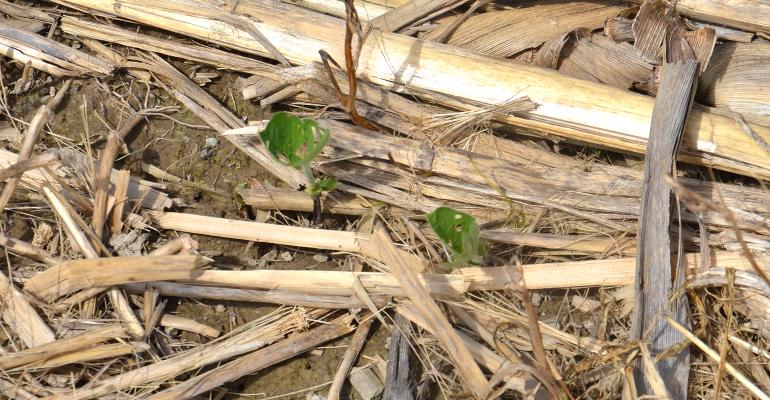Are soybean insecticide seed treatments justified?

Soybean Pest Beat: When it comes to seed treatments, there is no one right answer for every situation.
Nov 24, 2021
Our seed supplier applies seed treatments based on what we want. Entomologists say insecticide seed treatments didn’t help last spring. Should we skip an insecticide and just apply fungicides?
The Indiana certified crop advisers panel answering this question includes Steve Gauck, a regional agronomy manager for Beck’s, Greensburg; Jeff Nagel, agronomist with Ceres Solutions, Lafayette; and Dan Ritter, agronomist with Dairyland Seed, Rensselaer.
Gauck: As always, scout to determine insect pressures and see if they’re reaching economic thresholds. The challenge with belowground pests is that we are very limited in control methods if we have an outbreak after planting. In many cases, there are no options for control. So, from that standpoint, in fields with a history of insect pressure, putting insecticide on offers some protection from potential yield loss.
Nagel: Neonicotinoid seed treatments for soybeans are primarily used to control overwintering bean leaf beetles, seedcorn maggots and early-season soybean aphids. In Indiana, the first two are the primary targets.
As more farm operations push soybean planting dates into April and emergence is slower, we have experienced more feeding damage from seedcorn maggots. In some cases, it’s severe enough to warrant replanting.
Seedcorn maggot adult flies are attracted to decaying residue for egg laying, so freshly tilled cornstalk fields, recently terminated weedy or cover crop fields, and manured fields are at more risk. Slow emergence increases risk by exposing seeds to a longer feeding time by maggots.
The solution would be to treat soybean seed with an insecticidal seed treatment. Unfortunately, we have observed seedcorn maggot damage on both treated and untreated fields. That leads to questions about return on investment of seed-applied insecticides.
On the other hand, we have not observed noticeable seedcorn maggot feeding on early-planted cornfields treated with insecticide seed treatment. We’re not sure why the difference, but it may be related to the amount of active ingredient on each seed. Many labels restrict the amount of insecticide that can be applied per acre, and the maximum rate can be different for corn and soybeans. In addition, since soybean seeding rates are three to four times that of corn, there would be less active ingredient applied per seed on soybeans even if the per-acre rate were the same. This might contribute to incomplete control of seedcorn maggot at times on soybeans.
Don’t expect soybean insecticide seed treatments to always perform consistently, but my bias would be to use them in higher-risk situations.
Ritter: I’m an unapologetic seed treatment advocate, and I tell my customers that so they know my bias going into these discussions. I have seen too many cases where treatment made a consistent and viable stand next to thin, questionable stands that were untreated. Yield data I have worked with is positive as well. So, you know my answer on the fungicide.
Is an insecticide needed in every situation? Perhaps not. In higher-risk areas, I would certainly consider an insecticidal seed treatment. Those areas may include heavy residue or cover crop situations that may harbor insect pests. Adding an insecticidal seed treatment will increase seed cost by approximately $7 to $8 per unit. You need less than 1 bushel per acre to pay for adding the insecticidal seed treatment.

